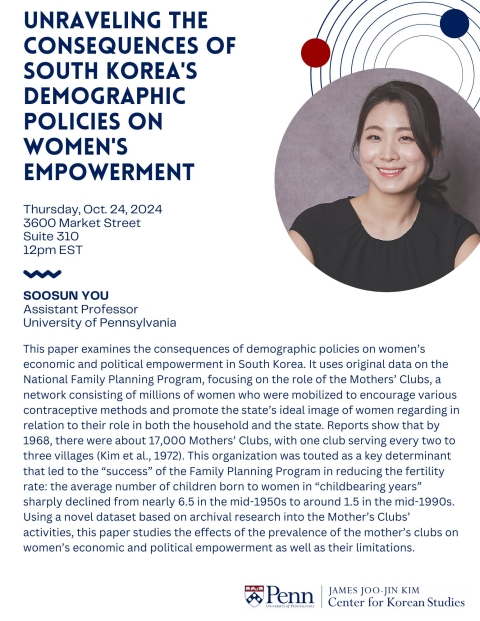
Korean Studies Colloquium
3600 Market Street
Suite 310
This paper examines the consequences of demographic policies on women’s economic and political empowerment in South Korea. It uses original data on the National Family Planning Program, focusing on the role of the Mothers’ Clubs, a network consisting of millions of women who were mobilized to encourage various contraceptive methods and promote the state’s ideal image of women regarding in relation to their role in both the household and the state. Reports show that by 1968, there were about 17,000 Mothers’ Clubs, with one club serving every two to three villages (Kim et al., 1972). This organization was touted as a key determinant that led to the “success” of the Family Planning Program in reducing the fertility rate: the average number of children born to women in “childbearing years” sharply declined from nearly 6.5 in the mid-1950s to around 1.5 in the mid-1990s. Using a novel dataset based on archival research into the Mother’s Clubs’ activities, this paper studies the effects of the prevalence of the mother’s clubs on women’s economic and political empowerment as well as their limitations.
 James Joo-Jin Kim Center for Korean Studies
James Joo-Jin Kim Center for Korean Studies